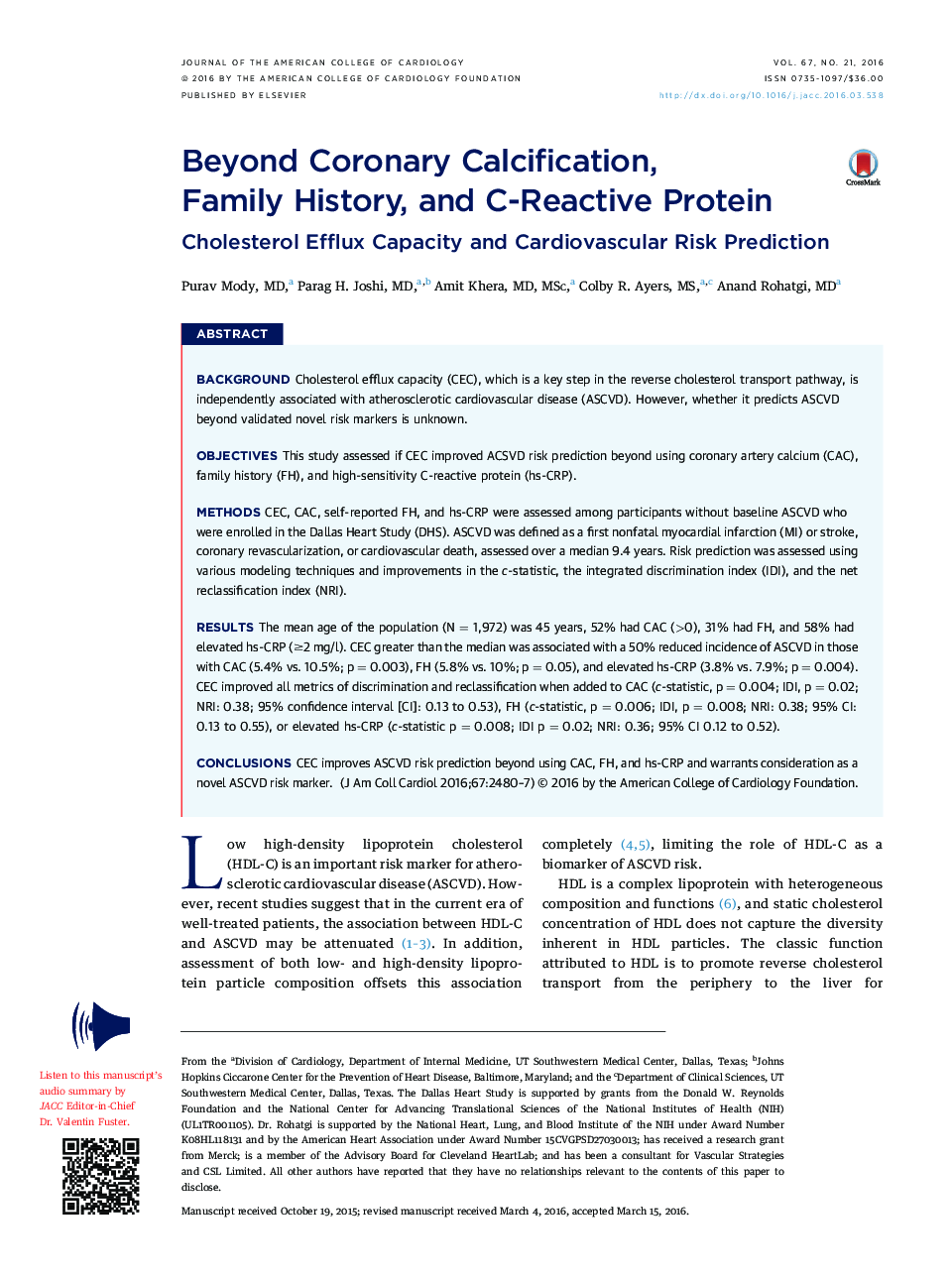| Article ID | Journal | Published Year | Pages | File Type |
|---|---|---|---|---|
| 5981577 | Journal of the American College of Cardiology | 2016 | 8 Pages |
BackgroundCholesterol efflux capacity (CEC), which is a key step in the reverse cholesterol transport pathway, is independently associated with atherosclerotic cardiovascular disease (ASCVD). However, whether it predicts ASCVD beyond validated novel risk markers is unknown.ObjectivesThis study assessed if CEC improved ACSVD risk prediction beyond using coronary artery calcium (CAC), family history (FH), and high-sensitivity C-reactive protein (hs-CRP).MethodsCEC, CAC, self-reported FH, and hs-CRP were assessed among participants without baseline ASCVD who were enrolled in the Dallas Heart Study (DHS). ASCVD was defined as a first nonfatal myocardial infarction (MI) or stroke, coronary revascularization, or cardiovascular death, assessed over a median 9.4 years. Risk prediction was assessed using various modeling techniques and improvements in the c-statistic, the integrated discrimination index (IDI), and the net reclassification index (NRI).ResultsThe mean age of the population (N = 1,972) was 45 years, 52% had CAC (>0), 31% had FH, and 58% had elevated hs-CRP (â¥2 mg/l). CEC greater than the median was associated with a 50% reduced incidence of ASCVD in those with CAC (5.4% vs. 10.5%; p = 0.003), FH (5.8% vs. 10%; p = 0.05), and elevated hs-CRP (3.8% vs. 7.9%; p = 0.004). CEC improved all metrics of discrimination and reclassification when added to CAC (c-statistic, p = 0.004; IDI, p = 0.02; NRI: 0.38; 95% confidence interval [CI]: 0.13 to 0.53), FH (c-statistic, p = 0.006; IDI, p = 0.008; NRI: 0.38; 95% CI: 0.13 to 0.55), or elevated hs-CRP (c-statistic p = 0.008; IDI p = 0.02; NRI: 0.36; 95% CI 0.12 to 0.52).ConclusionsCEC improves ASCVD risk prediction beyond using CAC, FH, and hs-CRP and warrants consideration as a novel ASCVD risk marker.
